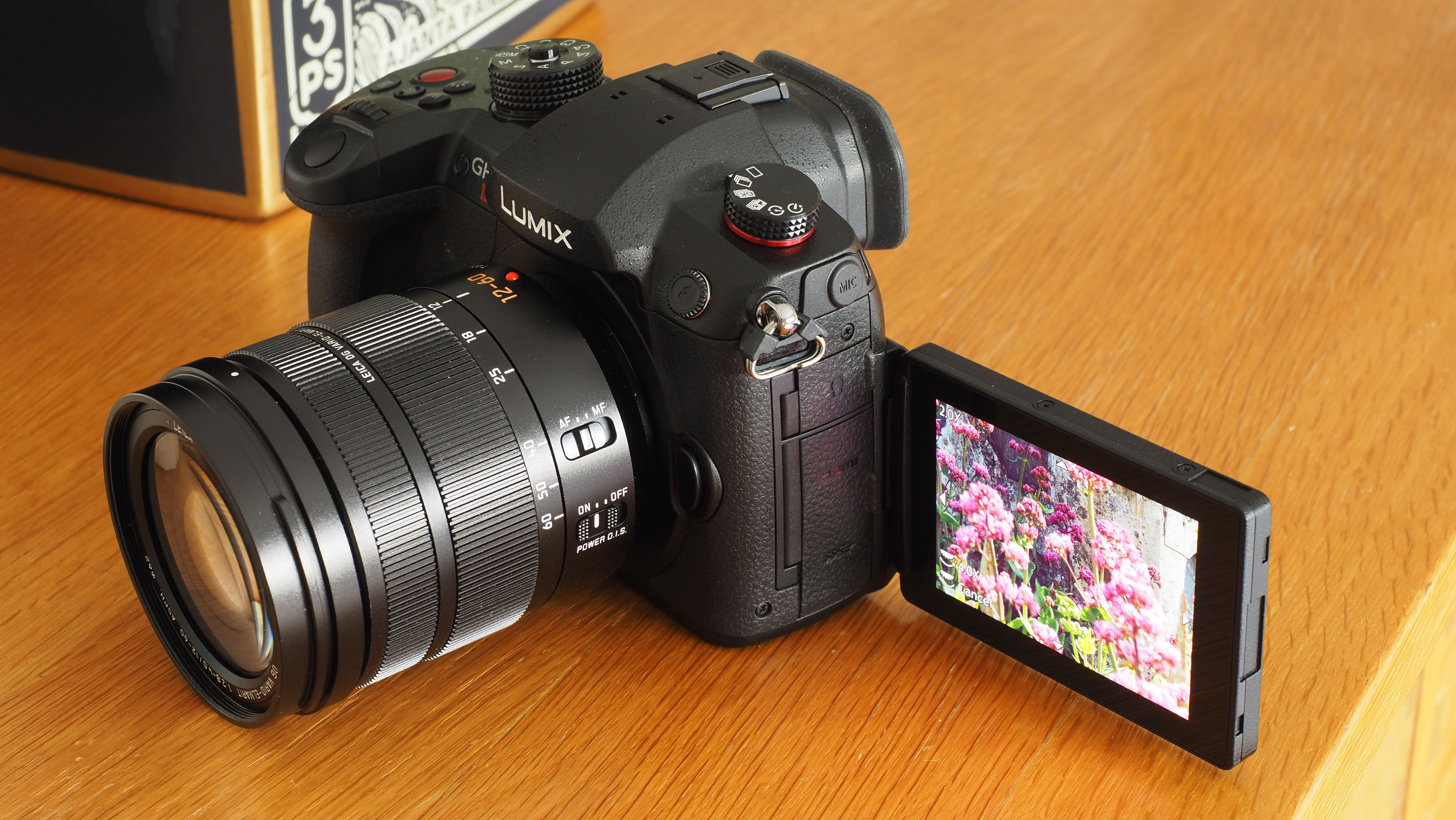Best printer inks in 2025: inkjet printer cartridges explained
When it comes to choosing the best printer inks, there are plenty of inkjet cartridge options to choose from

I've been testing and reviewing inkjet printers for decades and have generally found that the best printer inks come from the printer maker itself. Drop for drop, printer ink is notoriously expensive, with prices often being compared to the world’s finest perfumes and champagnes. In their defense, printer manufacturers spend billions in research and development, and often sell their printers at a loss, so they have to make their money somewhere. Even so, inkjet printers are generally sold with relatively low-capacity ‘setup’ or ‘installation’ cartridges, and it can come as a shock when a new set of higher-capacity cartridges costs more than the printer itself.
It’s naturally tempting to buy ‘compatible’ cartridges, manufactured by independent companies. But just how compatible are they? You might be lucky and get problem-free printing with very good results. But you could be unlucky. The printer might stop working reliably, throwing up random error messages. Impurities in the ink might block the print heads, the cartridges might leak, and print quality can suffer significantly. And whereas most genuine printer inks can produce photo prints that are guaranteed to last a lifetime, results from cheap inks and photo papers can lack color fidelity and start fading in weeks. Ultimately, some independent cartridges are better than others, but you pay your money and make your choice. Sticking with own-brand cartridges is always the safest (if most expensive) option.
Anyway, let’s start simple and work our way through the various types of ink sets available on the market today.
The Quick List
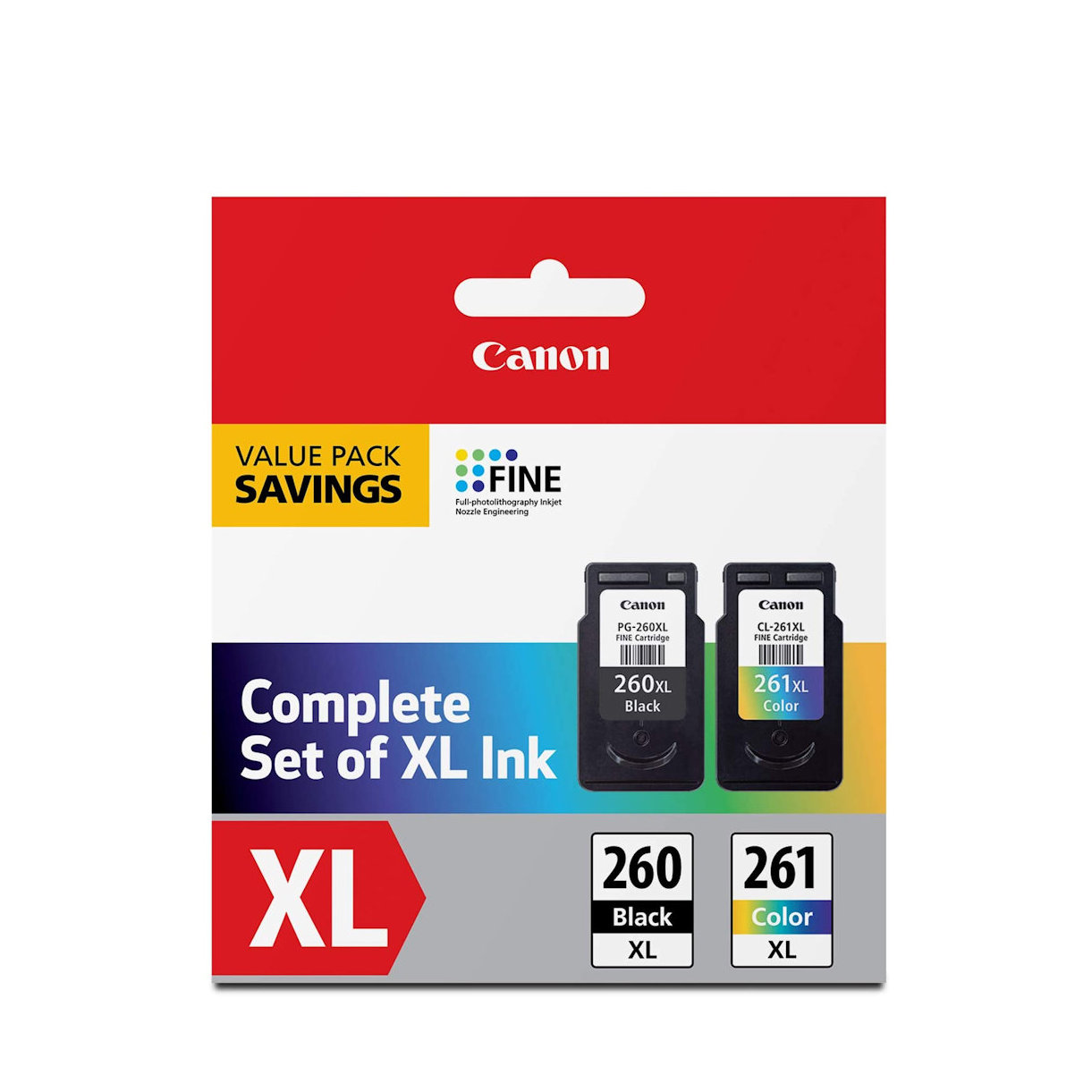
Canon's budget two-cartridge printer ink system, featuring one black and one tri-color cartridge.
Read more below...
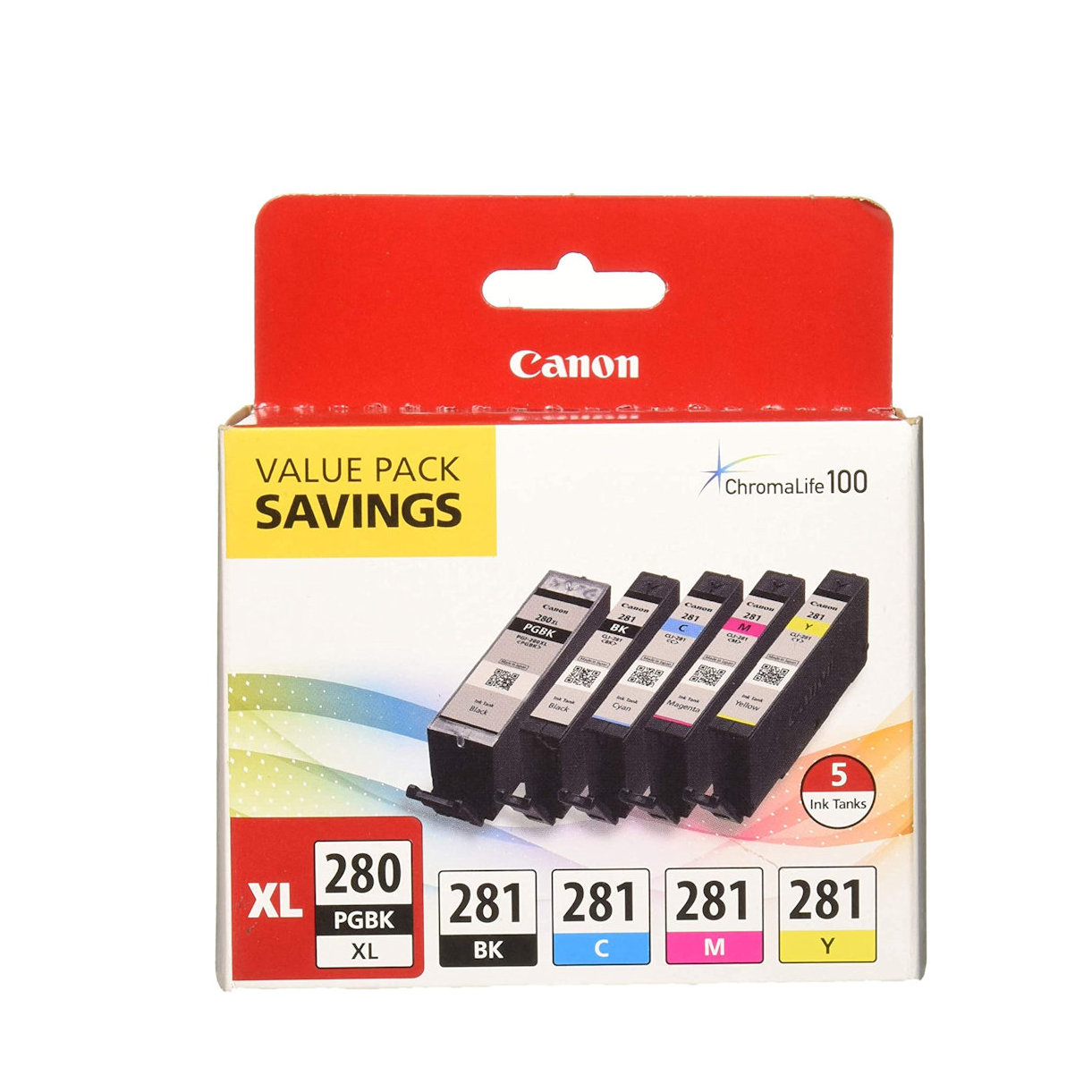
Typically with five or six individual cartridges, this set features pigment-based black and dye-based color inks.
Read more below...
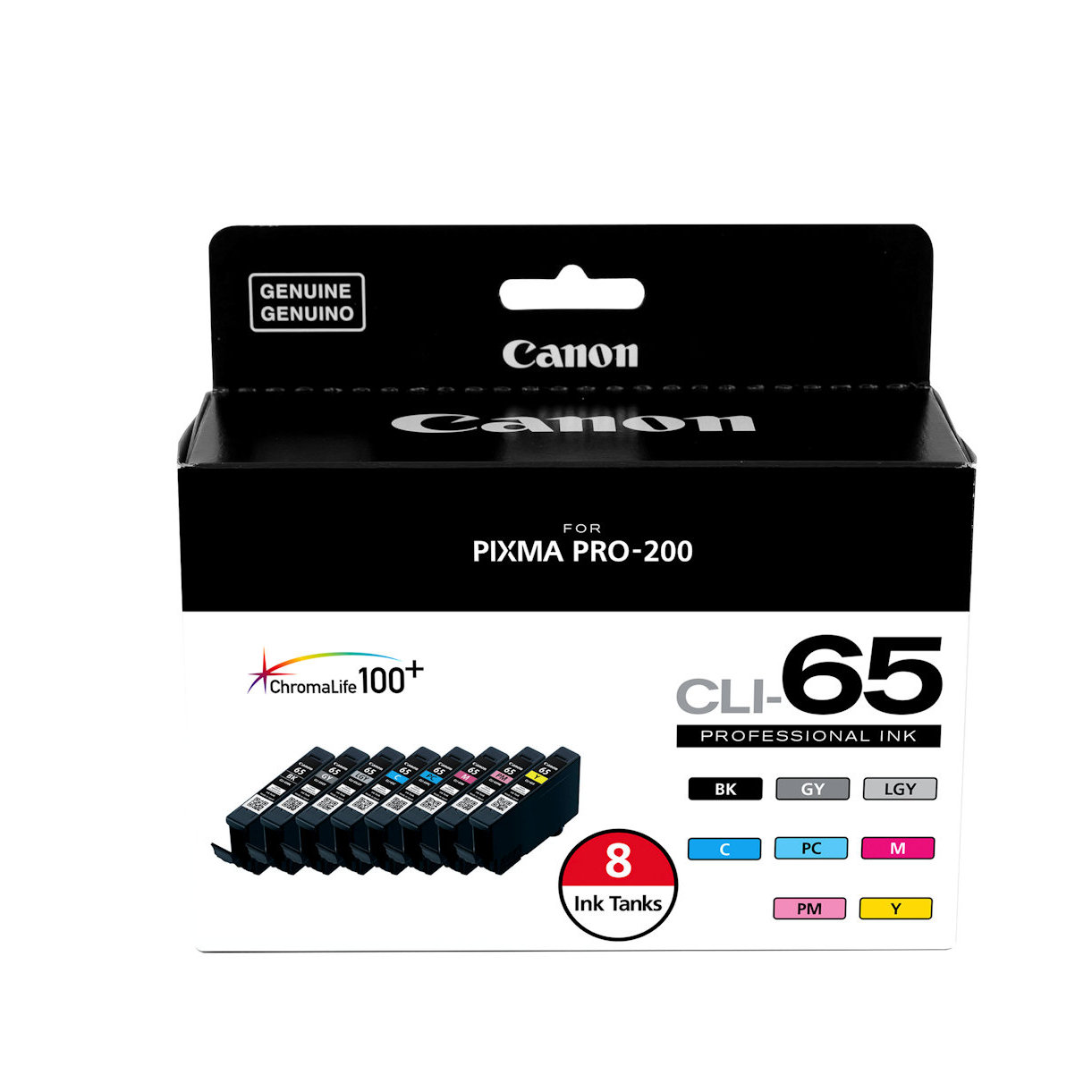
The high-end ChromaLife 100+ inks are used in up-market printers like the PIXMA PRO-200 for the ultimate in glossy photo quality.
Read more below...
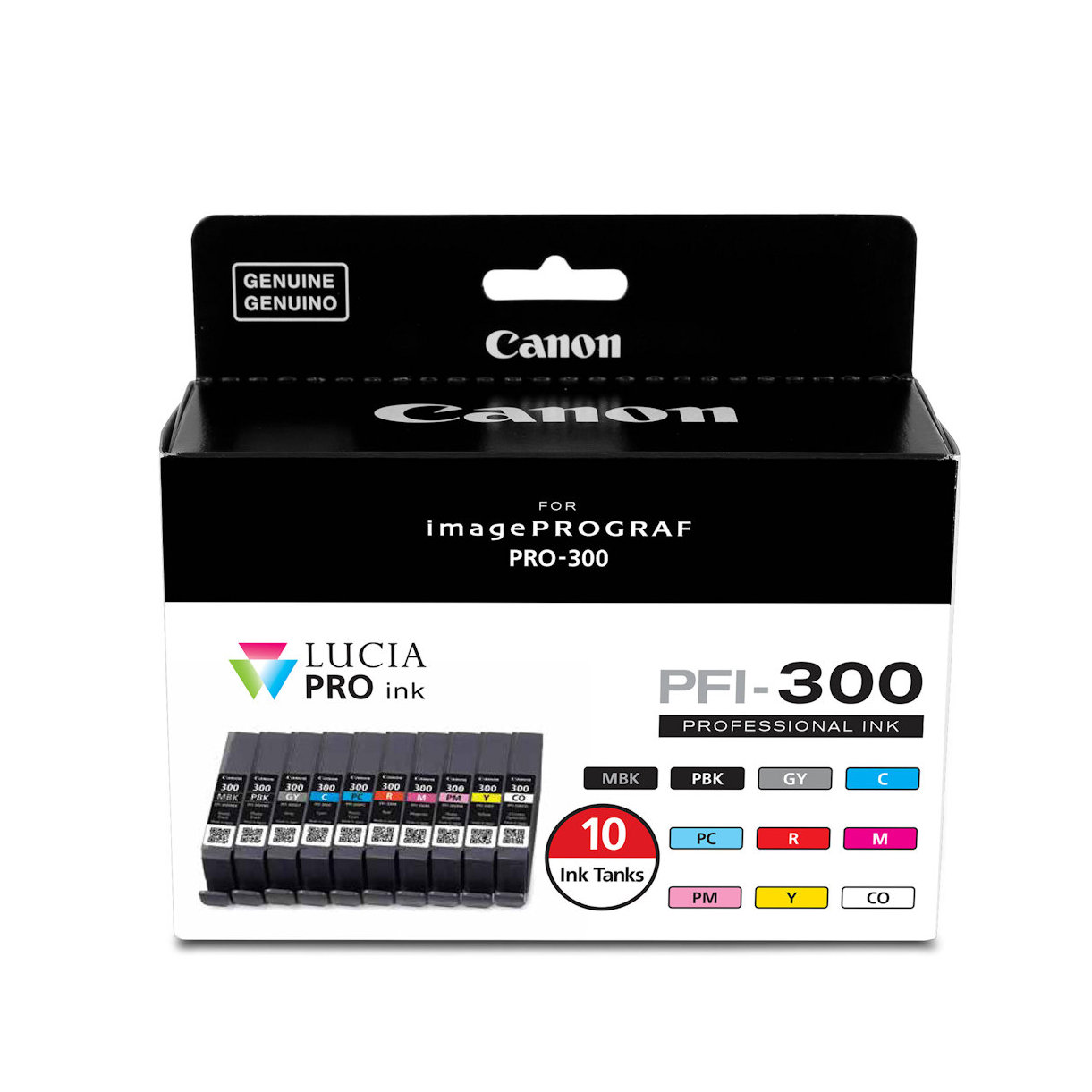
A specialist ink set comprising a wide range of pigment-based inks for top-quality prints on matte photo paper and fine art media.
Read more below...

Epson's latest large-capacity cartridges of pigment based UltraChrome inks are designed for professional photographic output.
Read more below...
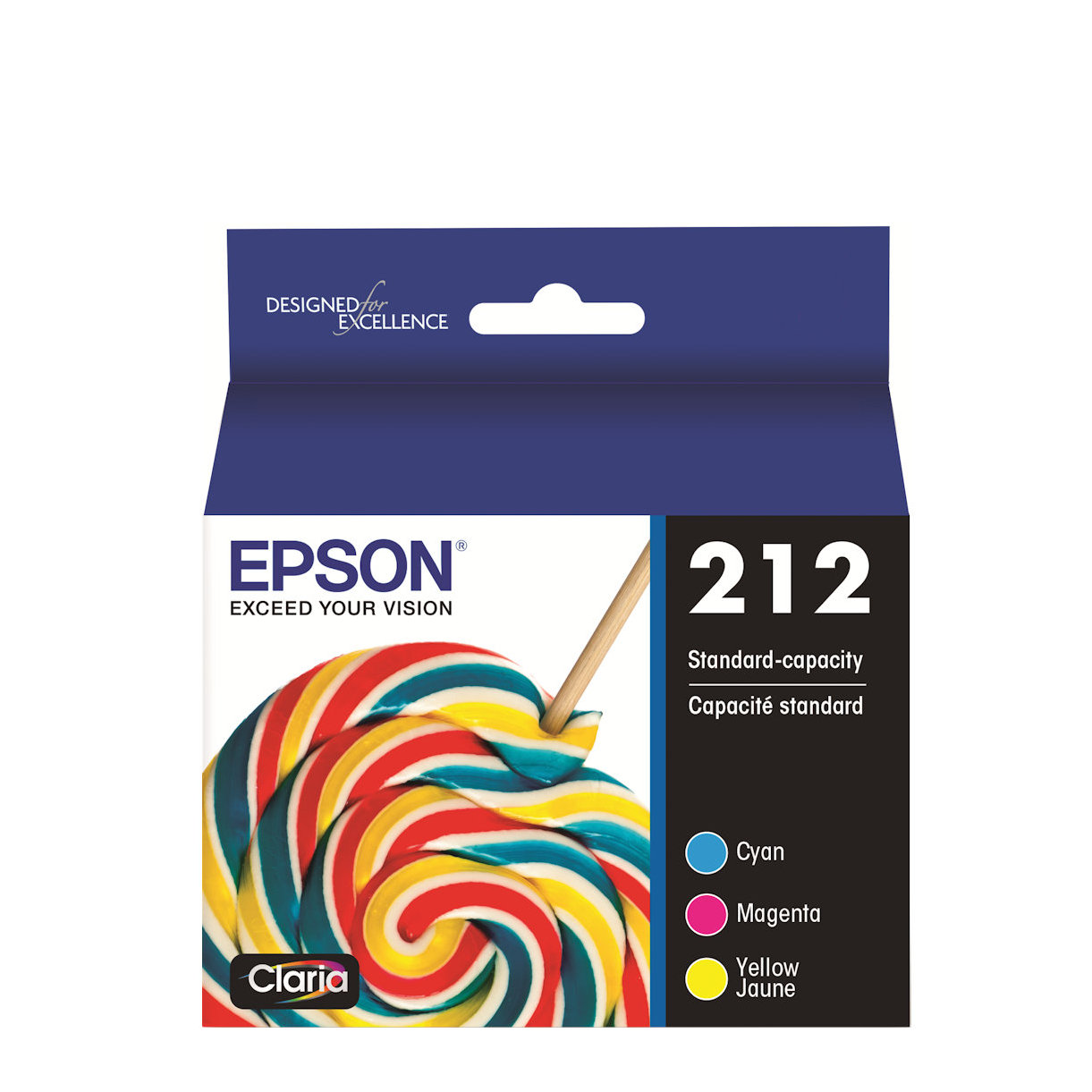
This set of four cartridges comprises pigment black and dye-based colored inks for good quality mono and color documents.
Read more below...
Load the next products...
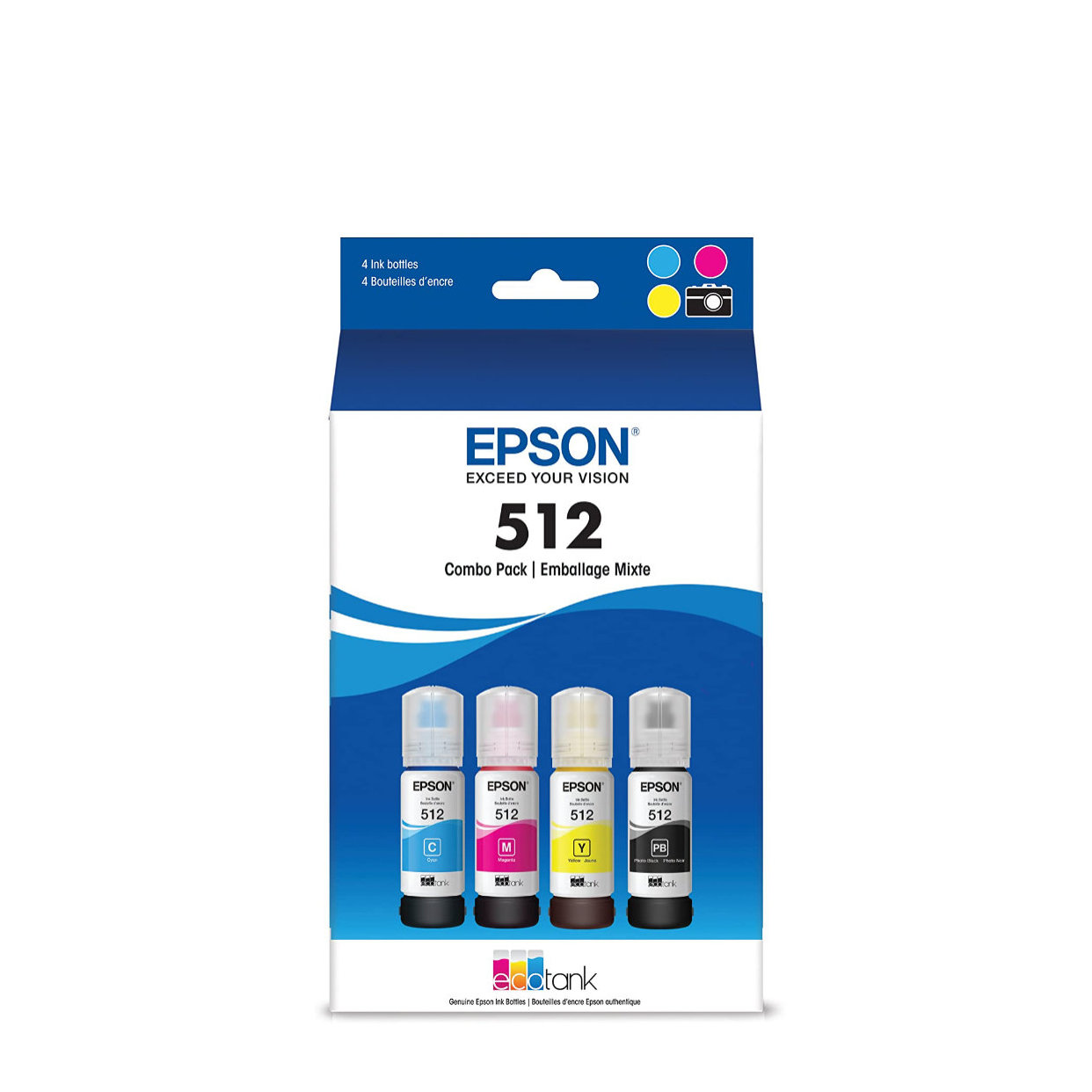
This set of inks comprises pigment black and dye-based CMY, sometimes with additional dye-based black, in relatively high-capacity, low-cost bottles.
Read more below...
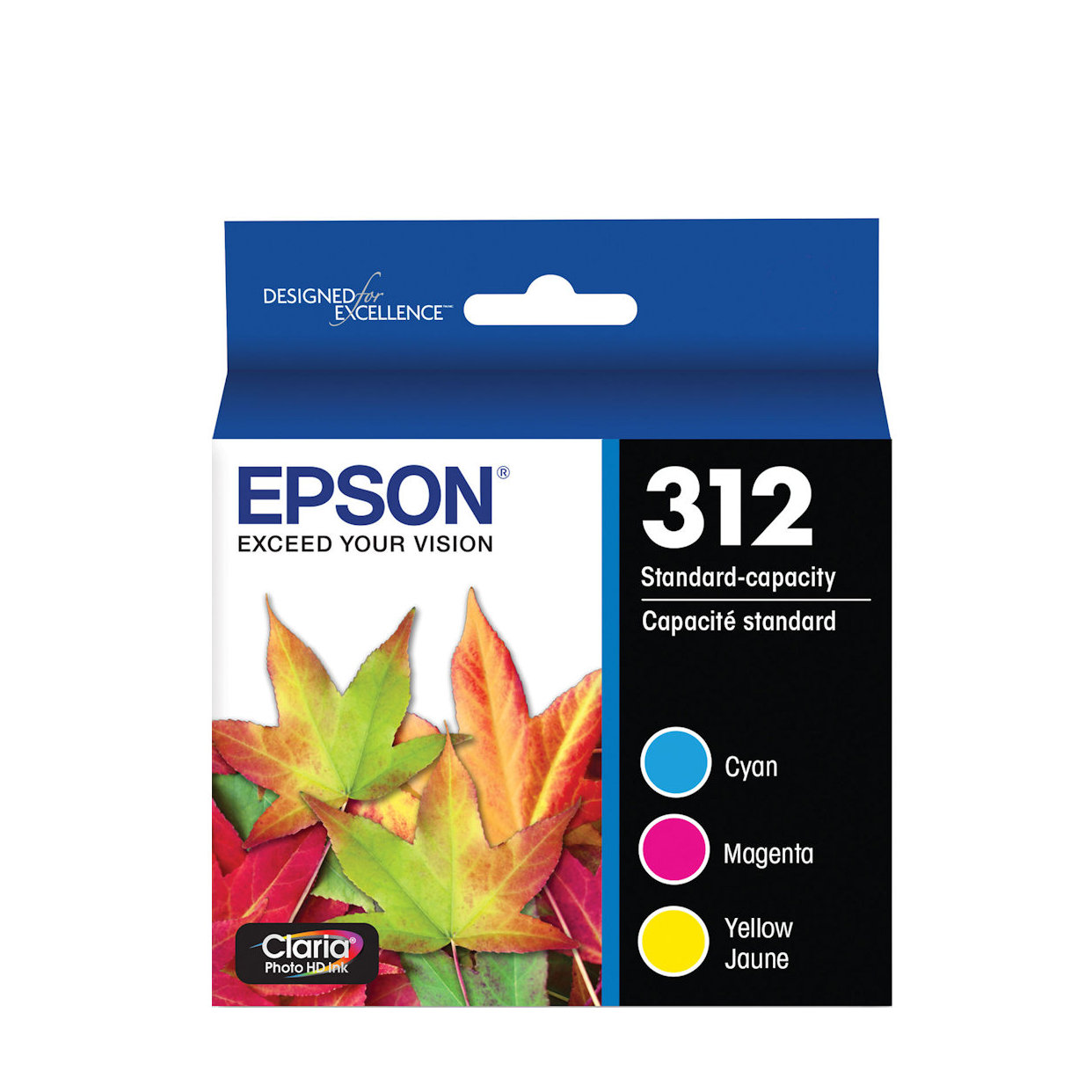
Good for photo printing, this range of dye-based inks includes up to six colors, including light cyan and light magenta, for an extended gamut.
Read more below...
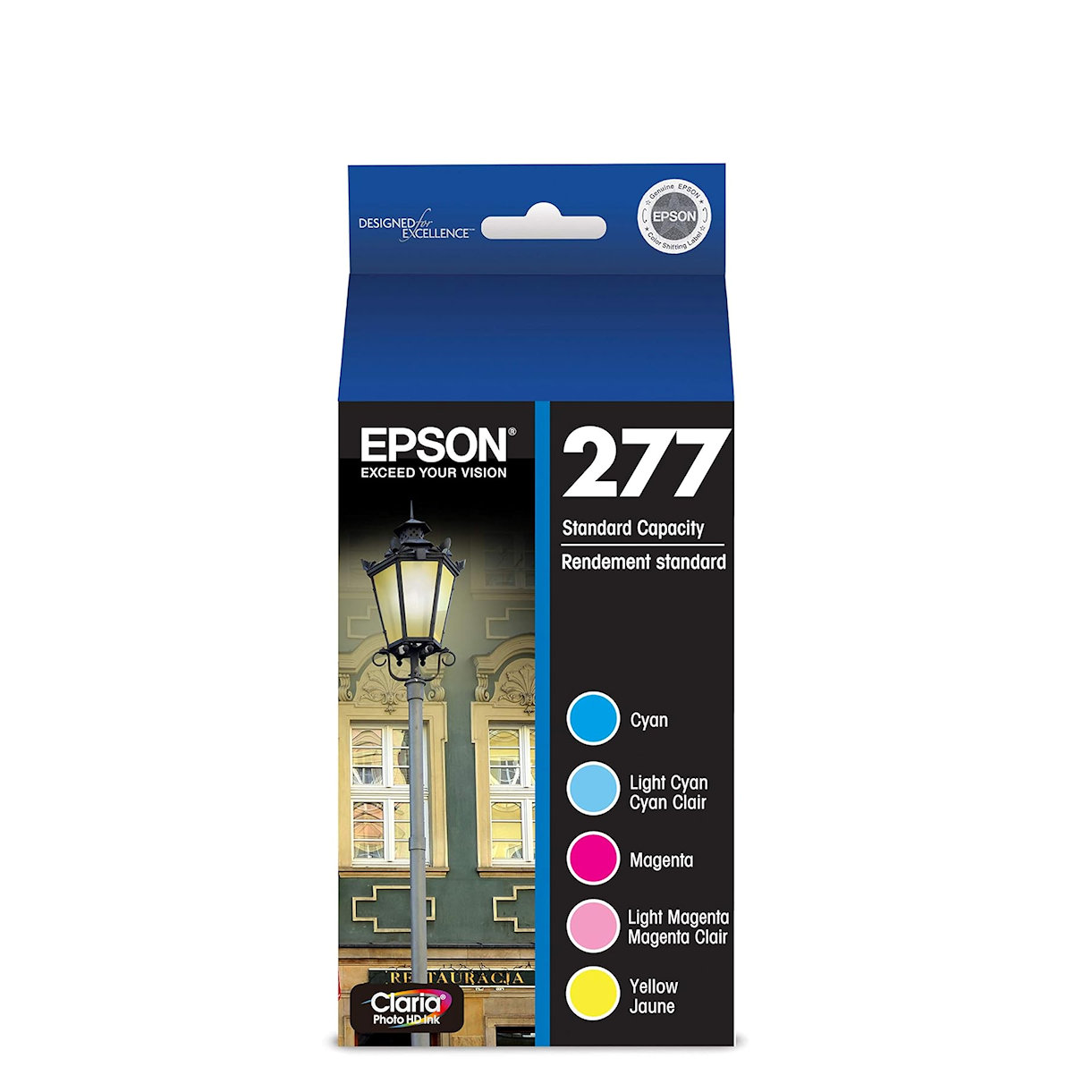
Like the Epson 'Squirrel' inks, the 'Elephant' range includes up to six dye-based inks but despite the name, cartridge volumes tend to be smaller.
Read more below...
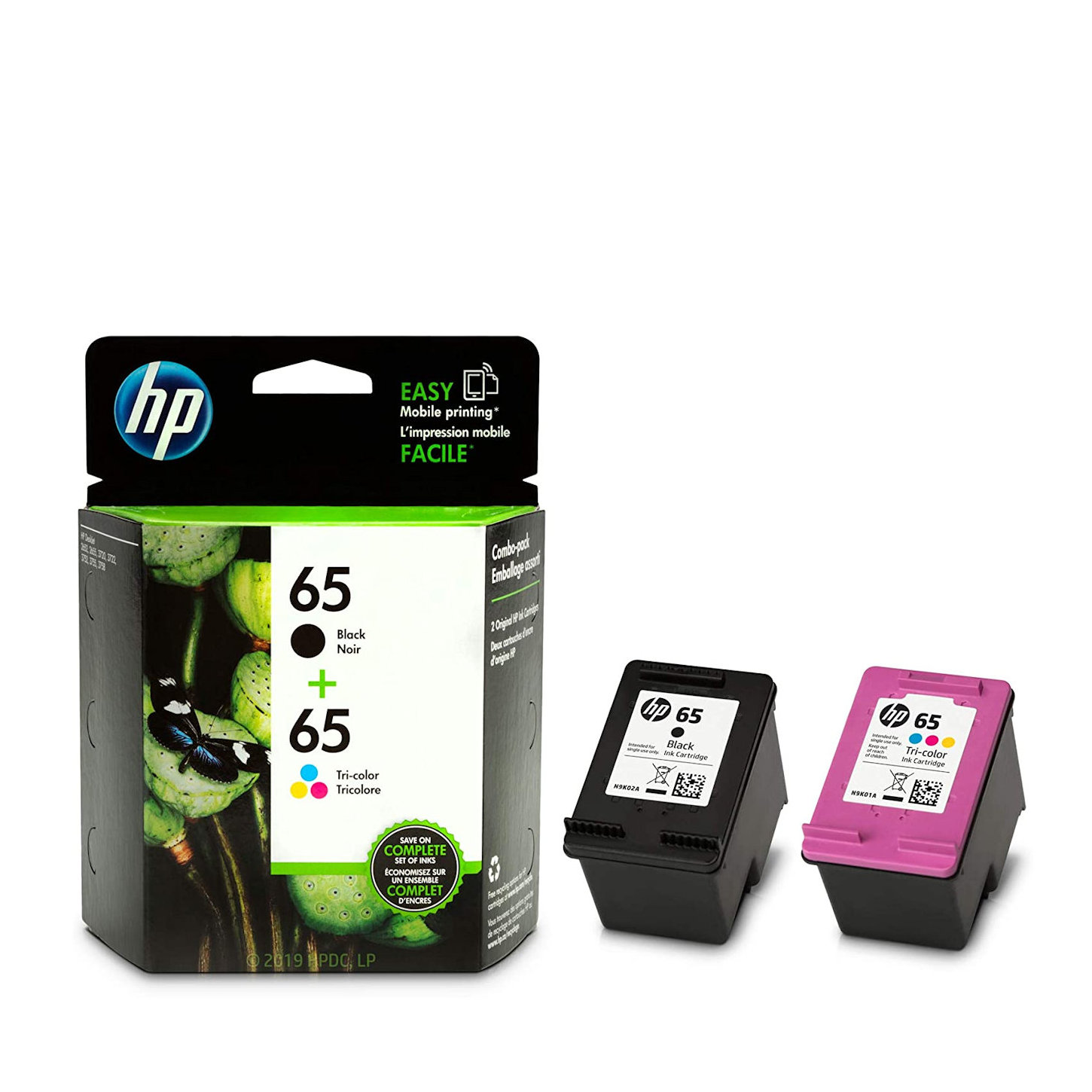
This twin set of HP cartridges follows the time-honored tradition of comprising dye-based black and tri-color dye inks.
Read more below...
Best inkjet printer inks
Why you can trust Digital Camera World
Canon Tri-color
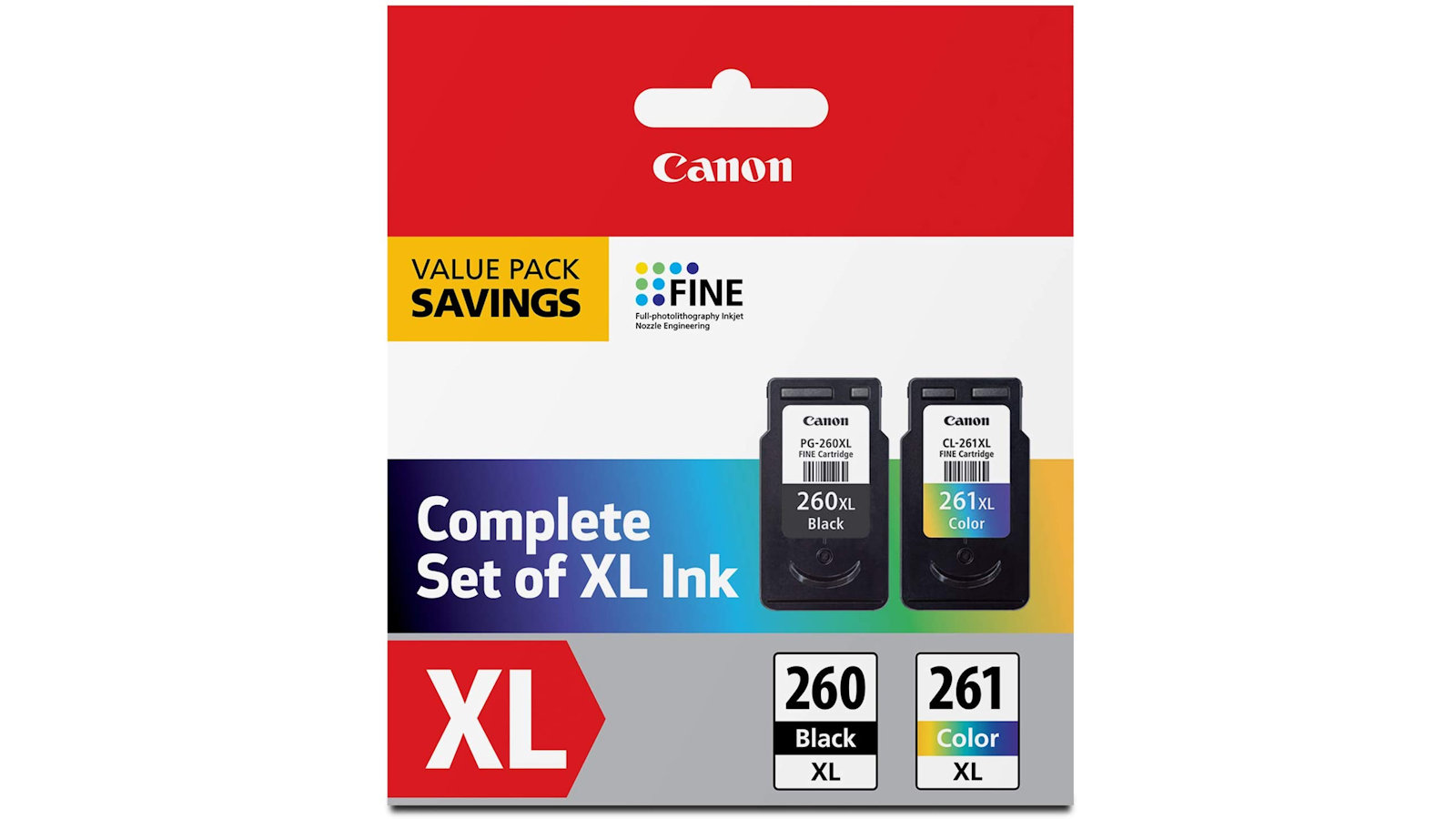
Canon PG-260/CL-261 (PG-560/CL-561)
Specifications
Reasons to buy
Reasons to avoid
This cartridge set is used in various Canon printers including the PIXMA TS7450/TR7020, which is a relatively inexpensive multi-function model that includes not only a scanner but also an auto document feeder and handy onboard controls based around an OLED screen. There’s a pigment black and a tri-color dye-based CMY cartridge but, unlike with some competing systems, the ink is relatively affordable, especially if you go for the high-yield XL options. The PG-260 black cartridge is sold as the PG-560 outside North America, whilst the CL-261 color cartridge is also found as the CL-561 in some territories. These cartridges contain just over twice as much ink as in the similar HP ink system, with a much lower cost per millilitre. Again, photo quality is lacklustre and, while you can end up throwing ink away if you use one particular ink color heavily, at least the two-cartridge system makes for quick and easy ordering and cartridge-changing.
Canon ChromaLife 100

Canon PGI-280/CLI-281 (PGI-580/CLI-581) ChromaLife 100
Specifications
Reasons to buy
Reasons to avoid
Canon has been making five-ink printers for years, combining a pigment-based black ink with dye-based cyan, magenta, yellow and black inks. The formulation of the inks aims for rich, black text in mono document printing, along with an impressive color range that favors everything from vivid landscape colors to accurate skin tones. The system has been refined over the years, to the point where the latest ChromaLife 100 dye-based inks deliver excellent photo quality, rivaling or beating that of many conventional six-ink photo printers. The ink set makes printers like the Canon PIXMA TS6350/TS6320 exceptional in terms of versatility for document and photo printing. Canon has also made six-ink printers in the past that add an additional dye-based grey cartridge for enhanced gamut and better black & white photo printing, as well as the recent PIXMA TS8350/8320, which uses an additional dye-based ‘photo blue’ ink for richer skies with even smoother graduations. The PGI-280 black cartridge is sold as the PGI-580 outside America, whilst the CLI-281 color cartridges are also found as the CLI-581 in Europe and elsewhere.
Canon ChromaLife 100 plus
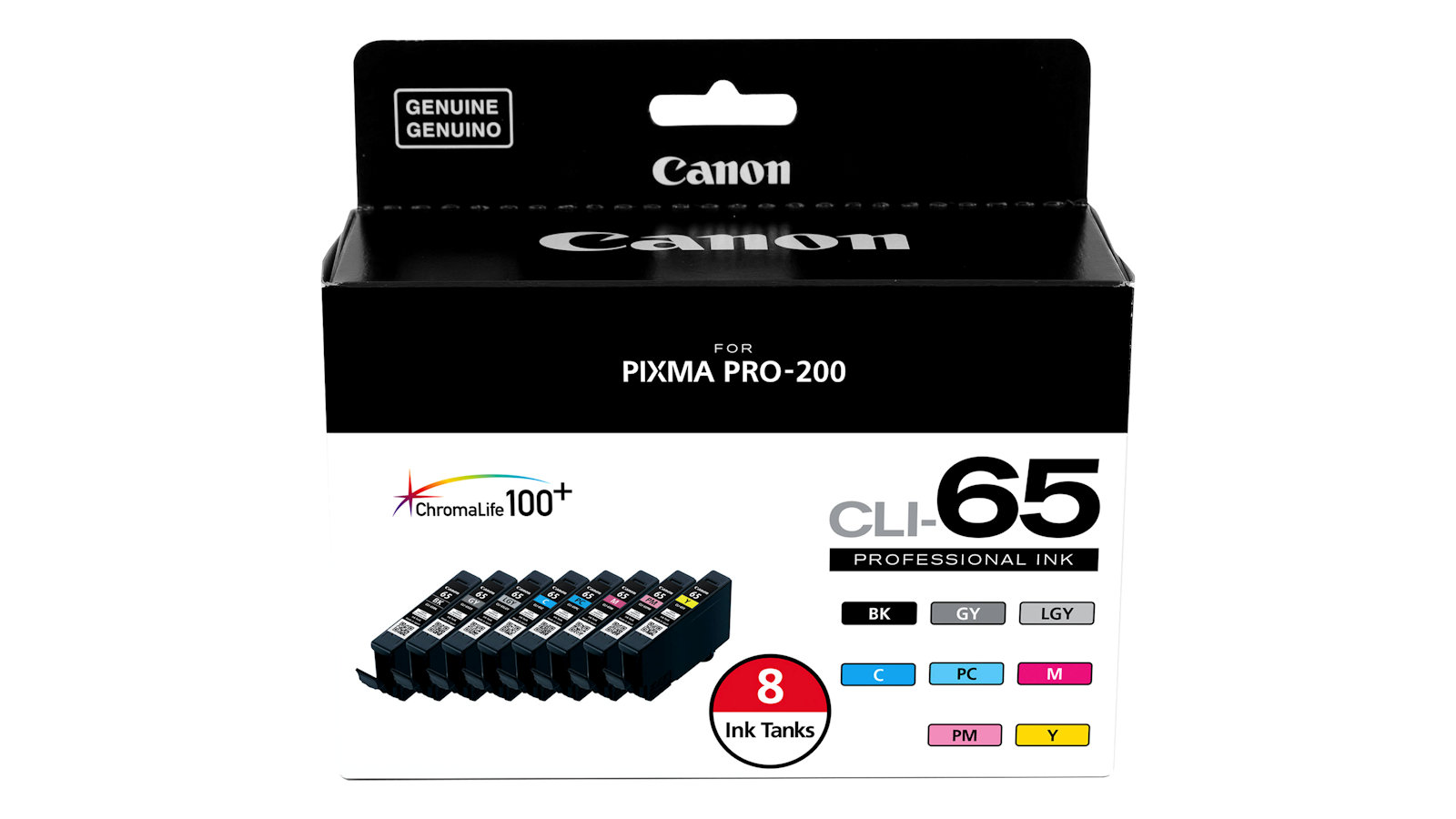
Canon CLI-65 ChromaLife 100+
Specifications
Reasons to buy
Reasons to avoid
The Canon PIXMA PRO-100 and 100s A3+/13-inch printers were our favorite large-format, dye-based photo printers, until the replacement Canon PIXMA PRO-200 came along. The latest printer runs on a new and improved range of eight dye-based ChromaLife 100+ inks that include CMYK plus photo cyan, photo magenta, grey and light grey. The net result is fabulous photo quality on glossy, semi-gloss and lustre papers, for both color and black & white photo printing. The new ink formulations deliver even deeper, richer blacks although, without a matte black ink, black density on matte media can’t rival that of the pigment-based Canon imagePROGRAF PRO-300. Another significant improvement in the new ChromaLife 100+ ink set is that gamut-matching is improved, so that photo prints are even more closely matched to what you see on a high-quality, calibrated screen.
Canon LUCIA PRO
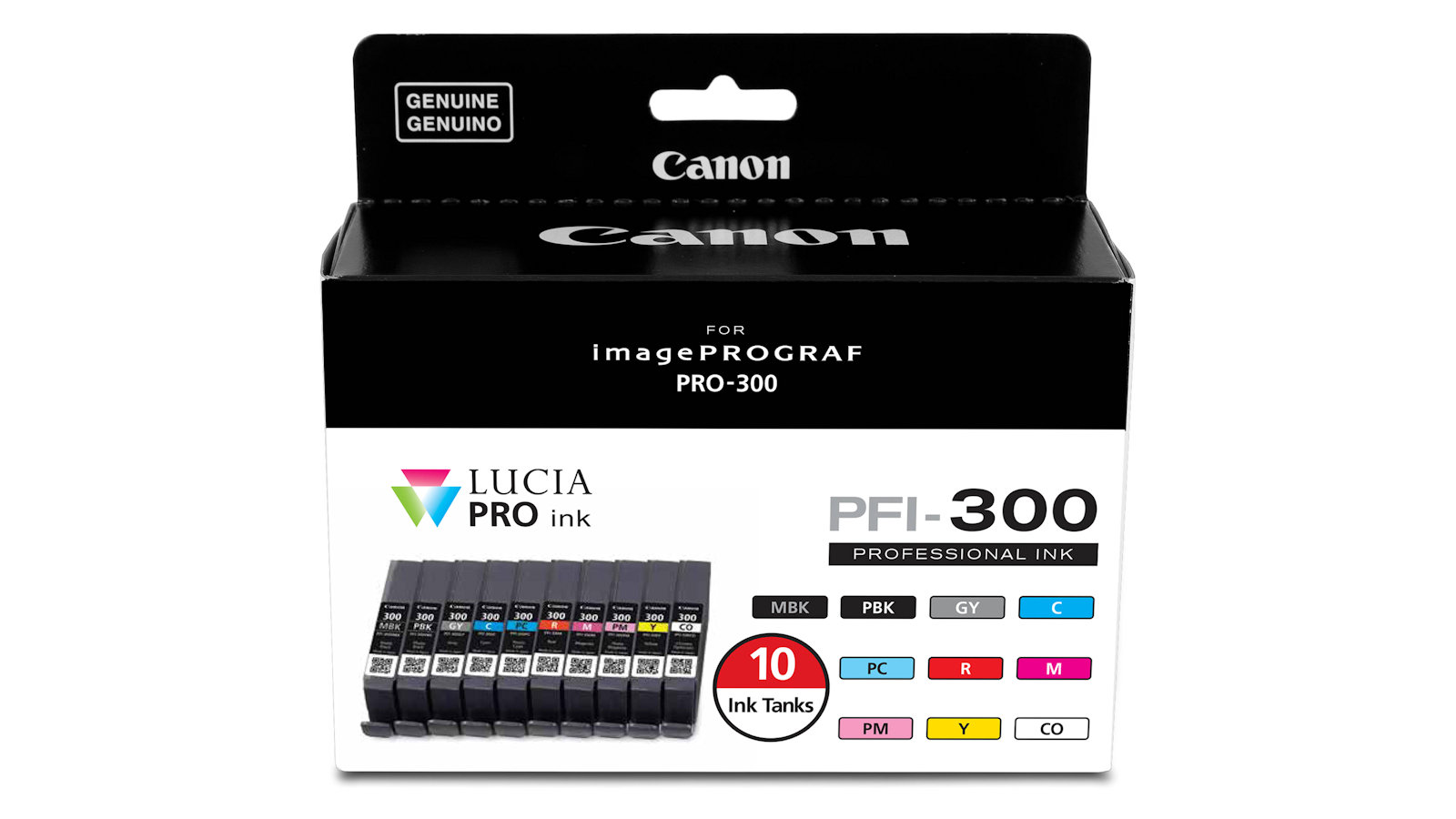
Canon PFI-300 LUCIA PRO
Specifications
Reasons to buy
Reasons to avoid
This ink set for Canon’s latest imagePROGRAF PRO-300 A3+/13-inch printer is based on an updated range of LUCIA PRO pigment-based inks. As such, its major strengths are both color and black & white photo printing on matte photo paper and fine art media. Compared with dye-based ink, the pigment-based inks are more robust and less prone to fading over a period of decades, especially on matte paper which lacks the protective shiny covering of glossy paper. An upgrade over the ink set used in the previous PIXMA PRO-10 and PRO-10s large-format printers, the ink has been re-engineered to deliver more vibrant color and even deeper, richer blacks. Photo quality is absolutely exceptional, based on a line-up of nine cyan, magenta, yellow, photo cyan, photo magenta, matte black, photo black, grey and red inks. For printing on glossy paper, there’s also a ‘chroma optimizer’ cartridge, which helps to minimize the effects of bronzing and gloss differential. As such, output on glossy and semi-gloss photo papers looks much smoother and more uniform than usual, at least for a pigment-based printer.
Epson UltraChrome PRO10
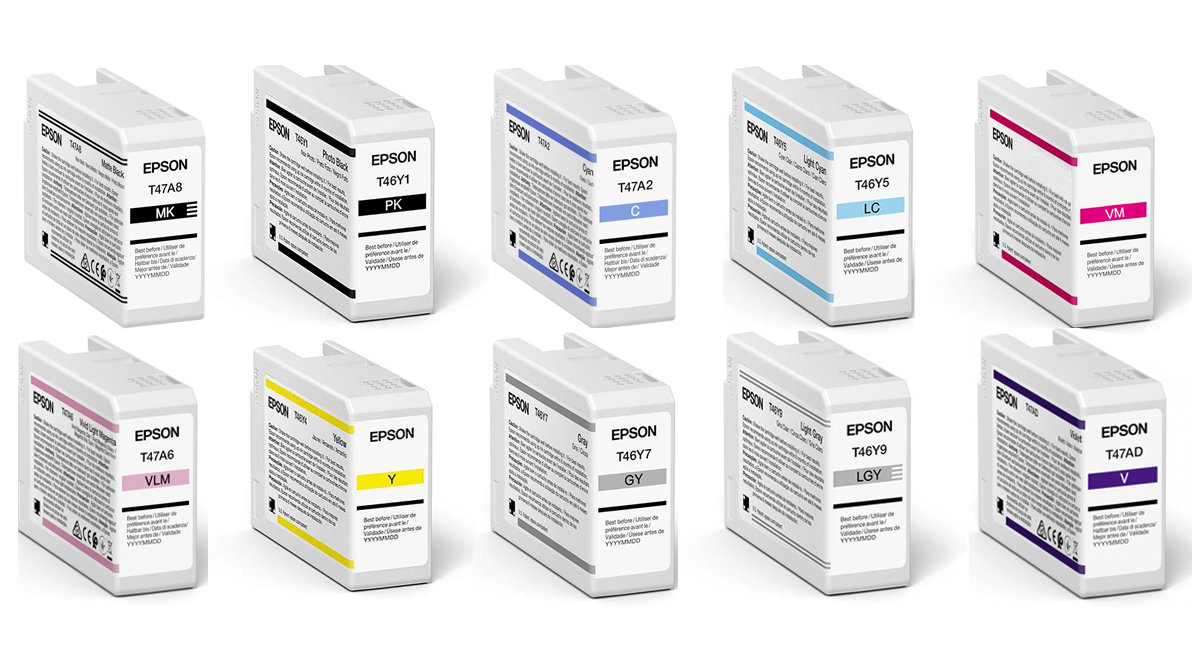
Epson T46Y / T47A UltraChrome PRO10
Specifications
Reasons to buy
Reasons to avoid
The range of pigment-based UltraChrome PRO10 inks for the new Epson SureColor P900 A2/17-inch printer is essentially the same as for the smaller SureColor P700 A3+/13-inch printer. As such, you get 10 inks in total, including cyan, light cyan, vivid magenta, vivid light magenta, yellow, matte black, photo black, grey, light grey and violet. The only difference is that the inks for the P900 are sold in 50ml cartridges, which have twice the capacity of the P700’s cartridges. The cost per millilitre works out significantly less, at around two-thirds the price. Even so, it’s disappointing that the ‘setup cartridges’ supplied with the printer have such little ink in them. In our tests, the cartridges started running out after printing just half a dozen or so A2/17-inch photo prints. Print quality for both color and black & white prints is spectacular, especially on matte photo paper and fine art media but, unlike in the competing Canon printers, there’s no equivalent of a ‘chroma optimizer’ cartridge, so output on glossy, semi-gloss and lustre papers can be prone to bronzing and gloss differential.
Epson Pigment/Dye
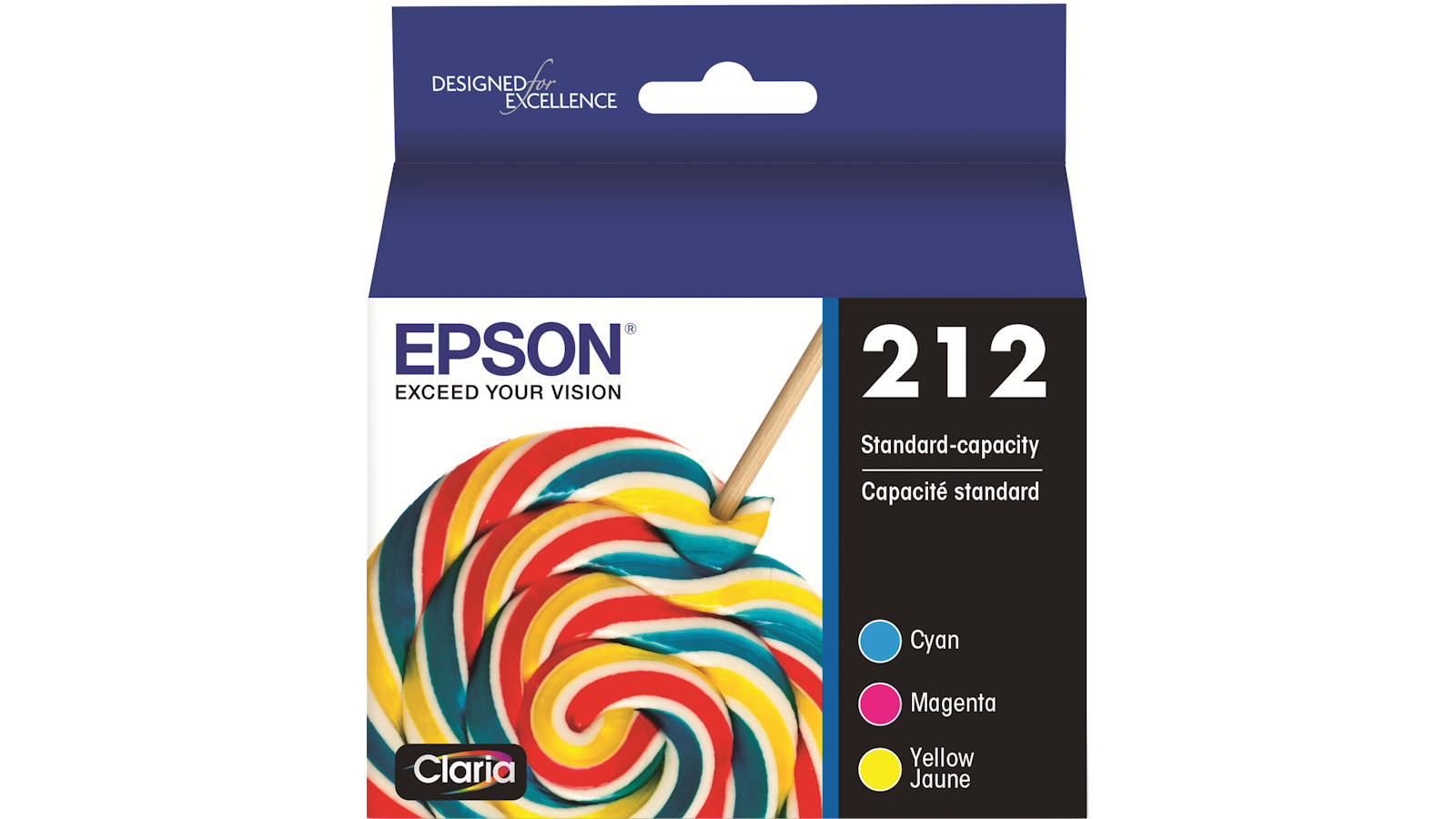
Epson 212 (Starfish 603)
Specifications
Reasons to buy
Reasons to avoid
Amongst other Epson printers, this ink set is used in the fairly inexpensive Workforce WF-2830 all-in-one printer. It’s an attractive multi-function printer with scanner, auto document feeder and direct fax facilities, ideal for working from home. A step up from black and tri-color cartridges, this ink set is based on individually replaceable cartridges for each ink, available in standard and high-capacity XL options for the pigment-black and dye-based CMY inks. It’s a particular bonus if, for example, you use a lot of cyan ink and would otherwise end up wasting magenta and yellow inks as part of a tri-color cartridge. The actual price of the ink per millilitre is less attractive, as it’s rather more expensive than most competing systems. As usual for four-ink line-ups, document printing is good but photo quality is relatively poor with a limited color space.
Epson EcoTank
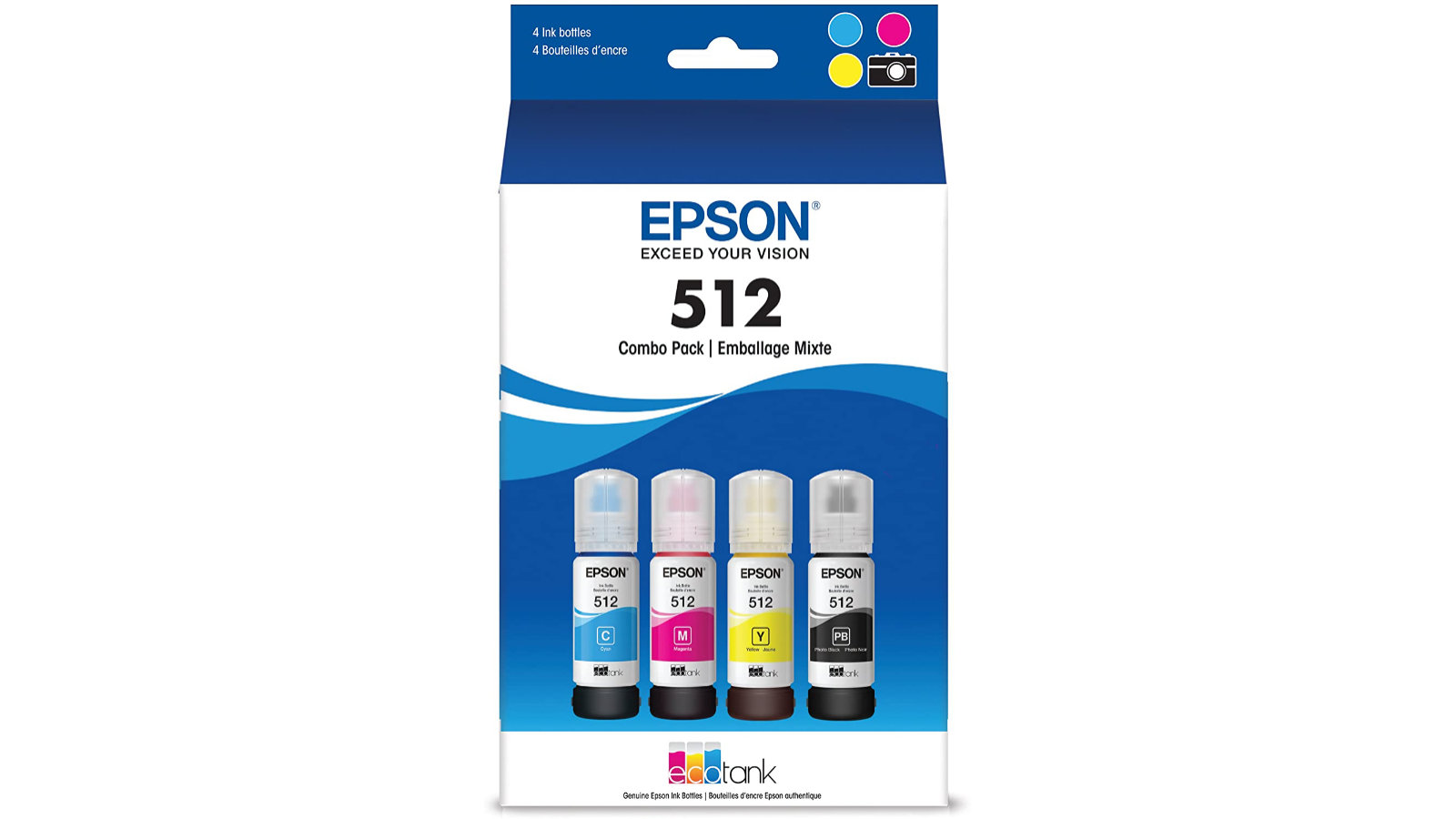
Epson T512 EcoTank (105/106 EcoTank)
Specifications
Reasons to buy
Reasons to avoid
Multi-function printers like the A4/8.5-inch Epson EcoTank ET-7700 and A3/11-inch EcoTank ET-7750 go about the business of ink delivery rather differently. There’s not a cartridge in sight and, instead, the printers are sold with high-capacity bottles of ink, which you pour into the ‘eco tanks’. With a whopping 140ml per bottle of pigment black ink and 70ml each for the bottles of dye-based cyan, magenta, yellow and ‘photo black’ inks, the printers are sold with two sets of bottles. That’s enough ink for printing 3,400 4x6-inch color photos and up to 14,000 mono documents.
Replacement ink is also remarkably cheap, as you’re only paying for bottles of liquid rather than for a relatively complex cartridge. As you’d expect, the downside is that you have to pay a comparatively high cost up front, when buying the printer, and you’ll need to embark on seriously high-volume printing to claw the money back. Quality is good for mono and color document printing but lags behind Canon’s five-ink cartridge-based printers for photo quality.
Epson Claria Photo HD 312
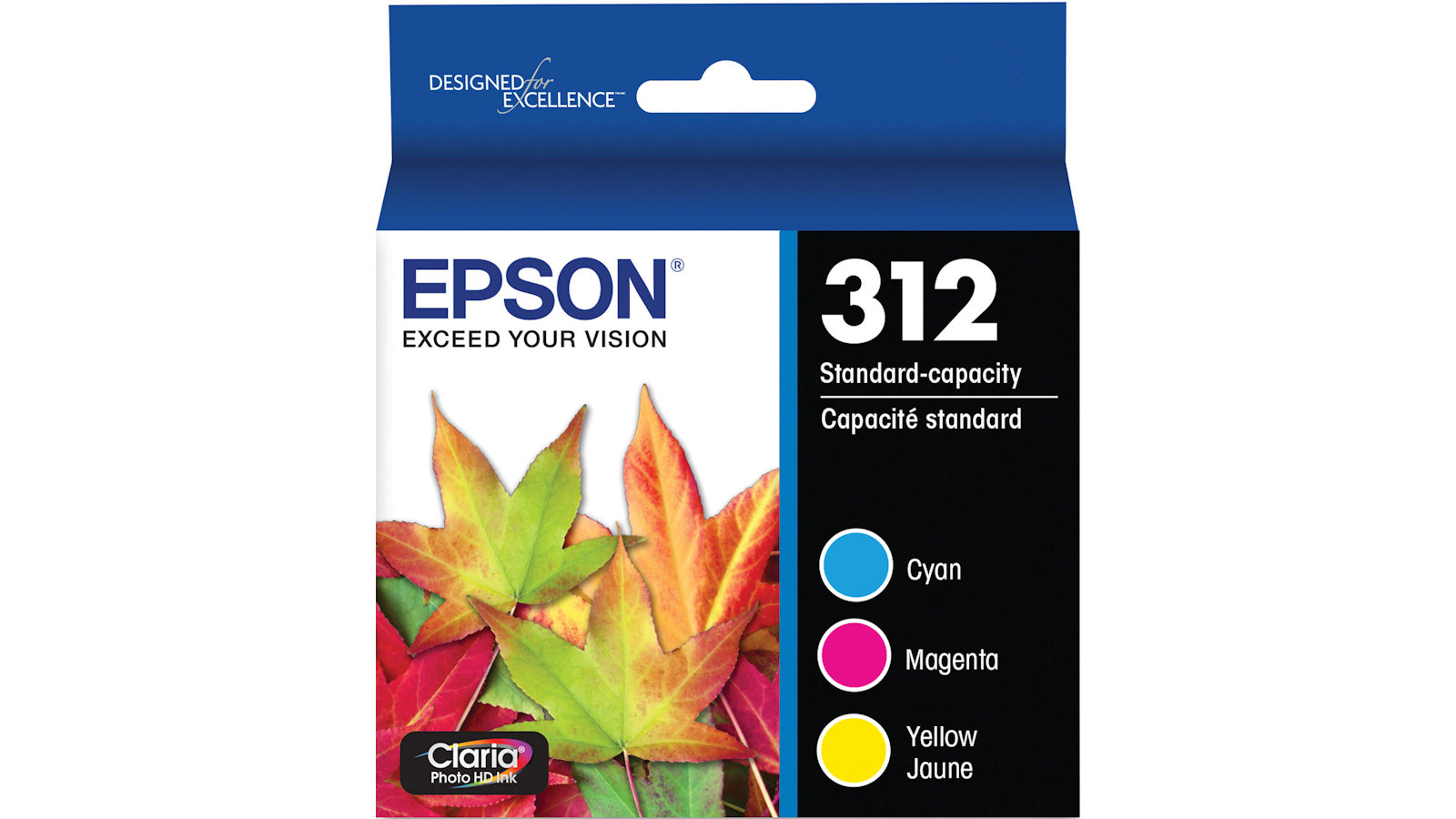
Epson T312 Claria Photo HD (Squirrel 378)
Specifications
Reasons to buy
Reasons to avoid
Taking its lead from conventional ‘inkjet photo printers’ down the years, this ink set is used in printers like the Epson Expression Photo XP-8600. It’s a six-ink system that uses dye-based CMYK cartridges, plus additional light cyan and light magenta cartridges, to expand the gamut with the aim of delivering excellent color fidelity for photo prints. The inks certainly combine to give very vibrant and vivid color quality, although with Epson’s ‘Photo Enhance’ printer driver option that’s typically switched on by default, vibrancy can look a little overly strident. With only one black ink cartridge, the printer is relatively poor for black & white photo output. Ink costs are pretty reasonable and, while the quality of black text is pretty deep for a dye-based ink, it’s quite prone to smudging on plain paper, if water gets dripped onto printed pages.
Epson Claria Photo HD 277
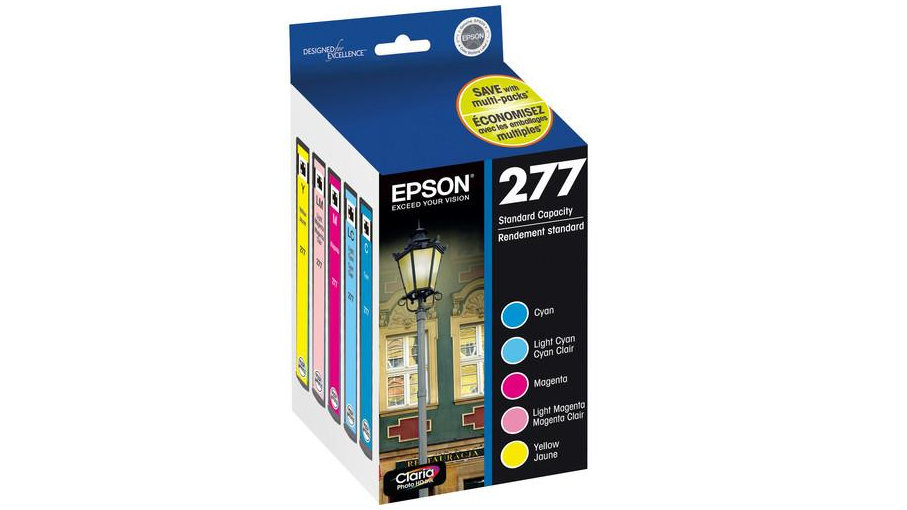
Epson 277 Claria Photo HD (Elephant 24)
Specifications
Reasons to buy
Reasons to avoid
The Epson 277 range of Claria Photo HD inks (known as the Epson 24 Elephant in Europe) is essentially identical to that used in the Epson Expression Photo XP-8600 A4/8.5-inch printer. However, this set of cartridges finds a home in the upscaled A3/11-inch Epson Expression Photo XP-970 printer. Again, it’s a good multi-function printer that includes a built-in scanner, although the scanner itself stays at an A4/8.5-inch size. As you’d expect, the range of six dye-based inks that add light cyan and light magenta to the regular CMYK mix enables very convincing photo output but is less than ideal for mono documents, with no pigment black ink. More surprisingly, the XL cartridges have a slightly lower capacity than the ones for the A4/8.5-inch printer, despite the larger format making it likely that you’ll use greater volumes of ink.
HP Tri-color
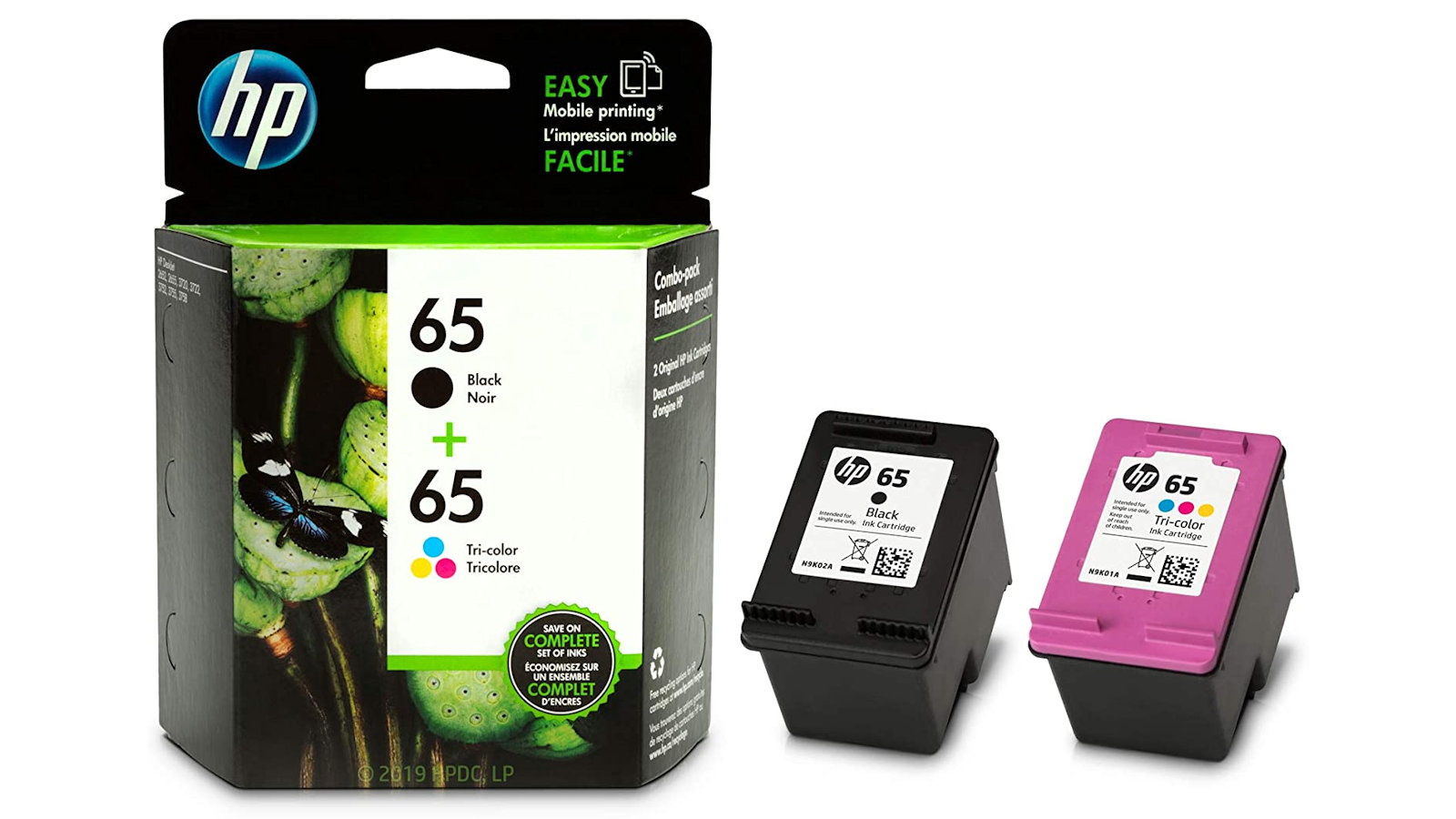
HP 65 / HP 304
Specifications
Reasons to buy
Reasons to avoid
HP’s entry-level Deskjet printers are typically compact and lightweight, making them easy to live with. The printers themselves tend to be inexpensive to buy, so it’s no real surprise that replacement ink cartridges are among the most expensive on the market. Indeed, even the ‘XL’ high-capacity options of the HP 65 cartridges (known as HP 304 cartridges in Europe) only contain 5.5ml in the pigment-based black cartridge and 7ml in the tri-color dye-based cartridge, working out to just over 2ml for each of the cyan, magenta and yellow inks. Typical of this type of system, photo output is relatively lacklustre, with composite black being relied upon from the CMY inks, in the absence of a ‘photo black’ cartridge. Even so, the printers and their inks make a decent space-saving option for occasional, low-volume printing.
How to choose the best printer cartridge
The most affordable printers on the market tend to run on just two cartridges. One typically holds pigment-based black (K) ink, the other is a ‘tri-color’ cartridge that contains dye-based cyan, magenta and yellow (CMY) inks. The ink sets can be pretty good for mono and color documents, but generally produce lackluster quality for photo printing. The main problem is that blacks and very dark colors in photos are created by generating ‘composite black’, based on mixing the cyan, magenta and yellow inks together, which is a poor substitute for adding a ‘photo black’ ink. Although the printers tend to be cheap to buy, the replacement cartridges are generally expensive. That’s because dual-cartridge printers typically have print heads built into the cartridges themselves, so you’re effectively buying a new print head every time you buy a new cartridge. Most of the best photo printers these days have fixed, permanent print heads that are fed by simpler replaceable cartridges, which are cheaper to manufacture.
Canon has been making five-ink printers for years now, which use pigment-based black along with CMYK dye-based inks, all in separate cartridges. They’ve historically given very good quality for both document and photo printing, making them very good all-rounders. An obvious advantage of having separate cartridges for each ink is that you only have to replace the ink that’s actually been fully used, rather than throwing away unused ink in a tri-color cartridge. The flipside is that each time you change a cartridge, some ink is wasted as the print head is primed. If one cartridge is running low, you can find that it runs out immediately after changing another cartridge, so you have to go through the whole process all over again, wasting more ink.
A more conventional line-up for photo printing is to use CMYK dye-based inks along with additional light cyan and light magenta inks, in a six-ink system. Epson still makes a number of inkjet photo printers in this format, again with individually replaceable cartridges. The downside is that dye-based black ink typically gives relatively feint, greyish text on plain paper, that’s very prone to smudging if water gets dripped on it. Even so, Epson’s current six-ink photo printers produce convincing black text for document printing, as well as very vivid and vibrant photo prints on glossy paper.
Moving up to professional-grade, large-format photo printers, additional colors as well as varying shades of grey ink are added to the line-up. This not only extends the gamut (or color space) so that a greater portion of the photographic color spectrum can be reproduced, but also enhances the fidelity for black & white photo printing. The printers can create a greater tonal range from really deep blacks to bright whites, with less need for color inks to be used, which helps to eliminate unwanted color casts.
There is no beating dye-based inks for an ultra-smooth finish on glossy photo papers. This is because the ink is fully absorbed beneath the outer, protective layer of glossy paper. Dye-based printers tend to be relatively fast and the output on glossy paper is more or less touch-dry as it leaves the printer.
However, most range-topping professional-grade photo inkjet printers run solely on pigment-based inks. Print speeds are slower and drying times are longer, but with the addition of matte black as well as ‘photo black’ inks, they can give even richer-looking blacks and deep colors. And whereas dye-based inks are fully dissolved in water, the larger molecules of pigment-based inks are merely suspended in liquid and are more robust. This makes them generally superior for archival quality and for use on matte photo paper and fine-art media. The downside is that the ink isn’t fully absorbed beneath the outer layer of glossy paper, so prints are prone to ‘bronzing’, with a loss of definition when viewed from certain angles.
‘Gloss differential’ can be another problem, where areas in a print that use more ink can look less glossy when printed with pigment-based inks on glossy papers. That’s why Canon uses an additional ‘chroma optimizer’ cartridge in some of its top-end pigment-ink photo printers.
Get the Digital Camera World Newsletter
The best camera deals, reviews, product advice, and unmissable photography news, direct to your inbox!
Matthew Richards is a photographer and journalist who has spent years using and reviewing all manner of photo gear. He is Digital Camera World's principal lens reviewer – and has tested more primes and zooms than most people have had hot dinners!
His expertise with equipment doesn’t end there, though. He is also an encyclopedia when it comes to all manner of cameras, camera holsters and bags, flashguns, tripods and heads, printers, papers and inks, and just about anything imaging-related.
In an earlier life he was a broadcast engineer at the BBC, as well as a former editor of PC Guide.

